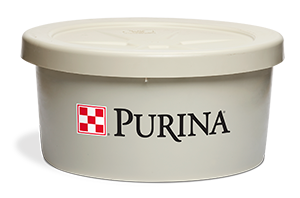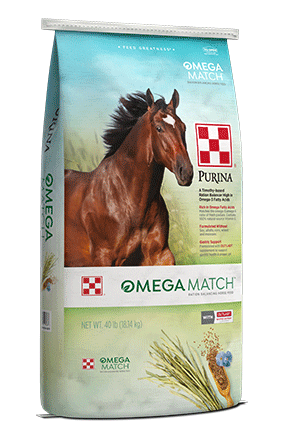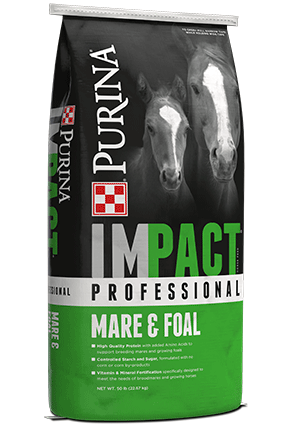
Some Popular By-Products in Horse Feed
Nutrition : Ingredients & Nutrients
Grains and other plants are processed to produce many products for human consumption, including flour, cooking oils, syrup, sugar and alcoholic beverages.
The parts of the grain or plant that remain after processing are called by-products. For many horse owners, the term “by-product” makes them think of lower quality. However, that is often not the case.
Many by-products contain nutrient levels or attributes that make them better feed ingredients for horses than the initial grain or the primary end-product of the processing. There is a long list of by-products that may be safely used in horse diets, but their nutritional value varies. You may be surprised at some of the ingredients that are considered by-products.
Beet pulp is the fibrous portion of the sugar beet that remains when the sugars have been extracted to make sugar. Plain, dried beet pulp is very low in sugar content. However, beet pulp is very dry, and molasses is often applied on the shreds of beet pulp being sold for animal feed. So, when low sugar is desired, look for non-molassed beet pulp.
Beet pulp provides highly digestible fibers and a greater water-holding capacity than hay or other fiber sources. It provides low starch and sugar calories, more calories than alfalfa, and fermentable fibers to help maintain hindgut health in horses. It is often fed soaked to help increase water intake. Furthermore, beet pulp is low in protein, amino acid balance and many minerals. If used in a diet, beet pulp should be blended with other ingredients to provide adequate nutritional balance.
Wheat middlings (midds) are also a by-product of flour milling. Wheat midds are the bran and the germ of the grain, the healthy parts that people are trying to get back into their diets by eating more whole grains. Since the starchy flour has been removed, midds are lower in calories and starch, but higher in fiber and protein than the original wheat grain. In many ways, this makes them a more valuable feed ingredient than the wheat grain. Both wheat midds and wheat bran are high in phosphorus and low in calcium, so they must be blended with other ingredients and balanced with adequate calcium to provide a proper calcium-to-phosphorus ratio in the finished ration.
Learn more about the science, research and innovation behind Purina® horse feeds.
The parts of the grain or plant that remain after processing are called by-products. For many horse owners, the term “by-product” makes them think of lower quality. However, that is often not the case.
Many by-products contain nutrient levels or attributes that make them better feed ingredients for horses than the initial grain or the primary end-product of the processing. There is a long list of by-products that may be safely used in horse diets, but their nutritional value varies. You may be surprised at some of the ingredients that are considered by-products.
Molasses and beet pulp in horse feed
The sugar industry produces two of the most popular by-products in horse diets: molasses and beet pulp. Molasses has been used for years because horses love the taste, and it helps prevent settling out or sorting of ingredients in mixed feeds. Although molasses is certainly sweet tasting, at typical inclusion rates of 10 percent or less in most sweet feeds, molasses actually contributes less than 5 percent sugar to a ration.Beet pulp is the fibrous portion of the sugar beet that remains when the sugars have been extracted to make sugar. Plain, dried beet pulp is very low in sugar content. However, beet pulp is very dry, and molasses is often applied on the shreds of beet pulp being sold for animal feed. So, when low sugar is desired, look for non-molassed beet pulp.
Beet pulp provides highly digestible fibers and a greater water-holding capacity than hay or other fiber sources. It provides low starch and sugar calories, more calories than alfalfa, and fermentable fibers to help maintain hindgut health in horses. It is often fed soaked to help increase water intake. Furthermore, beet pulp is low in protein, amino acid balance and many minerals. If used in a diet, beet pulp should be blended with other ingredients to provide adequate nutritional balance.
Wheat in horse feed
The flour industry also produces popular by-products used in horse rations. Wheat bran, which is the part of the wheat that remains when the flour is removed from the grain, has been used by horse owners for many years to add bulk and fiber to a grain mix. Wheat bran mashes have been thought to help prevent impaction colic, although the research indicates the added water may have been providing much of the benefit.Wheat middlings (midds) are also a by-product of flour milling. Wheat midds are the bran and the germ of the grain, the healthy parts that people are trying to get back into their diets by eating more whole grains. Since the starchy flour has been removed, midds are lower in calories and starch, but higher in fiber and protein than the original wheat grain. In many ways, this makes them a more valuable feed ingredient than the wheat grain. Both wheat midds and wheat bran are high in phosphorus and low in calcium, so they must be blended with other ingredients and balanced with adequate calcium to provide a proper calcium-to-phosphorus ratio in the finished ration.
Rice bran in horse feed
Rice bran is a by-product of the rice-milling industry. Similar to wheat midds, rice bran contains the bran and the germ of the rice grain that is removed to make white rice. Rice bran is higher in fat content than wheat midds, which makes rice bran higher in calories. It also requires stabilization or it turns rancid very quickly. Like wheat bran and midds, rice bran is naturally high in phosphorus and low in calcium, which must be taken into consideration when balancing the total diet.Soybean meal and soy hulls in horse feed
The process of extracting soy oil from soybeans produces two by-products used in horse feeds: soybean meal and soy hulls. Soybean meal is low in fat because it is what remains of the beans when the oil has been extracted. But it is high in protein and provides an exceptional amino acid balance for horses. This makes soybean meal the protein source of choice for high-quality horse feeds. Soy hulls are the external layer of the soybeans and provide very digestible fiber and low starch calories, similar to beet pulp.By-products in Purina® equine diets
At Purina, we use by-products in many of our horse feeds, but all must meet our very strict, high-quality standards and testing, as do all Purina ingredients. When quality standards are met and by-products are blended in proper amounts with other quality ingredients to provide balanced nutrition, by-products can contribute to an excellent diet for horses.Learn more about the science, research and innovation behind Purina® horse feeds.





